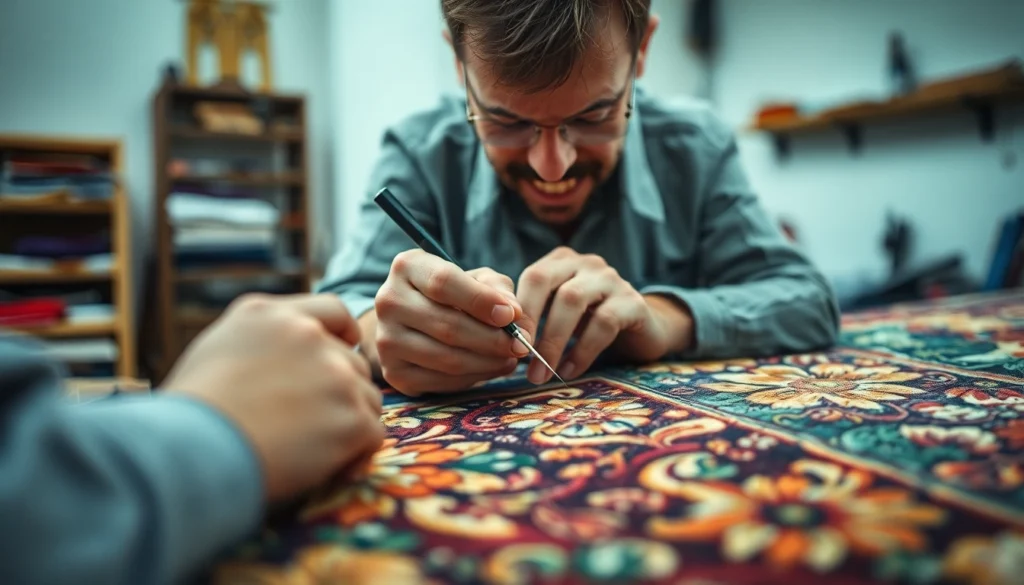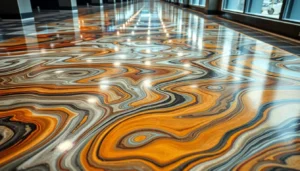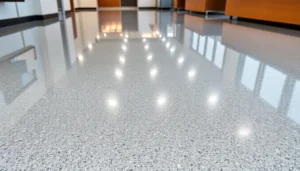Restauro Tappeti Milano: Expert Solutions for Preserving and Repairing Your Carpets

Introduction to Restauro Tappeti Milano
When it comes to preserving the beauty, value, and integrity of cherished carpets, especially those with historical or cultural significance, professional restoration becomes essential. Restauro Tappeti milano offers expert services tailored to both antique and contemporary carpets in Milan. Whether you’re dealing with wear, stains, tears, or other damages, entrusting your tapis to experienced specialists ensures durability and aesthetic preservation. In this comprehensive guide, we explore the critical aspects of carpet restoration in Milan, highlighting techniques, process steps, costs, and tips for selecting the right service provider.
Understanding the Importance of Carpet Restoration
Carpet restoration is more than just cleaning; it involves meticulous repair, cleaning, and preservation processes that breathe new life into worn or damaged carpets. Especially in Milan—a hub of art, design, and historical architecture—restoring carpets is about maintaining cultural legacy while enhancing visual appeal. Restored carpets can transform a space, reflect craftsmanship, and hold sentimental or monetary value. Professional restoration helps prevent further deterioration, ensuring the carpet remains a treasured asset for generations.
Ancient or antique carpets possess unique fibers and dyes that require specialized care. Without proper restoration, these artifacts risk irreversible damage from habitat factors like humidity, pests, or manual wear. Experienced restorers employ techniques grounded in traditional craftsmanship, supported by modern technology, to restore integrity and aesthetics effectively.
Common Damages and Restoration Needs
Understanding typical damages helps in gauging when to seek professional restoration. Common issues include:
- Stains and Spots: Caused by spills, pet accidents, or environmental factors that stain fibers and dyes.
- Fraying and Wear: Fractured or worn franges, threadloss, and thinning of fiber over time due to foot traffic or age.
- Holes and Tears: Result of accidents, pests, or natural deterioration, which compromise the carpet’s structure.
- Color Fading: Exposure to sunlight and cleaning agents can lighten dyes and distort patterns.
- Structural Damage: Loosening of knots, broken fibers, and stability issues needing meticulous repair.
Restoring these damages involves tailored solutions, ranging from patching and reweaving to dye touch-ups and fiber strengthening, ensuring the carpet’s original beauty and function are preserved.
Why Choose Professionals in Milano
While simple cleaning can be DIY, expert restoration demands specialized skills, experience, and tools. Professionals in Milan possess extensive knowledge of traditional techniques, modern methods, and industry best practices. They understand the nuances of regional and cultural patterns, fiber compositions, and dye types used in Persian, Oriental, and contemporary carpets.
Choosing expert restaurateurs ensures accurate damage assessment, proper handling of delicate fibers, and long-lasting results. Established companies typically offer comprehensive services such as pick-up and delivery, allowing clients convenience and peace of mind. For instance, centers like Persia&Tappeti and Babaei Carpets have over 20 and 30 years of experience, respectively, demonstrating their dedication and mastery in this field.
Furthermore, professional restorers often guarantee their work, provide tailored advice for preservation, and operate with high-quality materials that prevent future damage, making them the best choice for valuable investments.
Techniques and Methods of Carpet Restoration
Traditional Restoration Methods
Traditional techniques rely on artisanal craftsmanship, with skills passed down through generations. These methods include knot-by-knot reweaving, patching, and dyeing with natural pigments to match original colors. Restoration artisans meticulously assess each fiber, ensuring repairs blend seamlessly with the original design without compromising authenticity.
For example, repairing a tear might involve reweaving the affected area using similar yarns and knotting techniques. Dye touch-ups use natural or synthetic dyes that match original shades, requiring an expert eye for color matching. Such methods preserve the carpet’s historical integrity and are preferred for priceless, antique pieces.
Modern Technologies and Tools Used
Contemporary restoration employs advanced tools such as laser cleaning, chemical stabilization, and digital color matching. Laser technology enables precise removal of dirt, stains, or old dyes without damaging fibers. Chemical treatments can strengthen fragile fibers, making them more resistant to future wear.
Digital dye matching tools analyze a sample’s hue and guide restorers to recreate the color with high accuracy. Additionally, ultrasonic welding and specialized patching techniques allow for discreet repairs of holes or frayed areas, minimizing visual impact.
Customized Restoration for Different Types of Tappeti
Not all carpets are the same; each type demands tailored approaches:
- Antique Persian Rugs: Require careful cleaning and knot restoration to maintain authenticity.
- Modern Carpets: May involve color correction, fiber rejuvenation, and structural reinforcement.
- Oriental and Tribal Tappeti: Need precise color matching and reweaving for intricate patterns.
- Wool and Silk Carpets: Require gentle handling, as silk fibers are particularly delicate.
Experts assess the material, age, and technical features to determine the best restoration plan, ensuring longevity and aesthetic harmony.
Step-by-Step Process of Restauro Tappeti Milano
Initial Inspection and Damage Assessment
The process begins with a detailed examination of the carpet, identifying all damages, fibers, dyes, and structural issues. Restorers often document the condition with photographs, noting areas needing repair. This step guides the entire restoration effort and establishes a tailored treatment plan.
Understanding the carpet’s history, origin, and material composition helps in selecting appropriate techniques and materials, minimizing risk of further harm.
Cleaning and Damage Repair
Deep cleaning involves gentle washing, often with eco-friendly, pH-balanced solutions to remove dirt and stains without damaging fibers or dyes. Mechanical cleaning methods are supplemented with chemical treatments for stubborn stains or old dyes.
Following cleaning, repair work may encompass reweaving holes, fraying edges, and reattaching loose knots. This step demands craftsmanship and precision, ensuring repairs are resilient and hardly visible.
Final Restoration and Preservation Tips
Once repairs are complete, additional treatments like color stabilization and fiber strengthening are applied. Protective coatings or wraps may be used to shield the carpet from future damage.
Post-restoration, clients receive advice on proper maintenance, including recommended cleaning frequencies, environmental controls (humidity and light management), and handling tips to prolong the lifespan of their restored carpets.
Costs, Timeline, and Quality Assurance
Pricing Factors and Cost Estimates
Restoration costs can vary widely based on factors such as size, damage severity, materials, and intricacy of design. Typical prices range from a few hundred to several thousand euros. A simple cleaning might cost less, whereas complex repairs on valuable, antique pieces command higher fees. For precise estimates, professionals often provide consultation and quotes after initial inspection.
Expected Durations for Different Restoration Projects
Simple cleaning and minor repairs may take a few days, whereas extensive restoration of antique or damaged carpets can extend from a week to several weeks. The timeline depends on factors like the extent of damage, construction complexity, and restoration methods employed.
Ensuring High-Quality, Durable Results
Top-tier restoration centers guarantee quality by using authentic materials, skilled artisans, and modern equipment. They perform thorough inspections, employ industry best practices, and often provide post-service warranties. Regular follow-up and client education further ensure results last and maintain their beauty over time.
Choosing the Right Restauro Service in Milano
Tips for Selecting a Certified Restorer
Look for restoration centers with certifications, extensive experience, and positive customer reviews. Ask for portfolio examples, references, and guarantees of workmanship. Proven expertise with antique and high-value carpets is crucial.
Questions to Ask Before Signing a Service Agreement
- What restoration techniques will be used?
- Can you provide a detailed cost estimate?
- What is the expected timeline?
- Do you offer warranties or insurance coverage?
- How do you handle delicate or antique fibers?
Maintaining Your Restored Tappeti for Longevity
Post-restoration, proper maintenance extends the life of your carpet. Regular gentle vacuuming, avoiding harsh chemicals, controlling environmental factors, and professional cleaning every 1-2 years keep the fibers vibrant and structurally sound.
Proper storage during off-season or when not in use also prevents pests and damage. Consult your restoration specialist for personalized preservation strategies.





